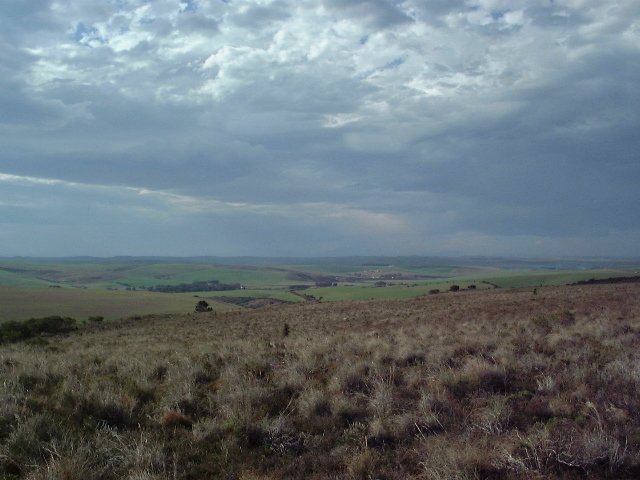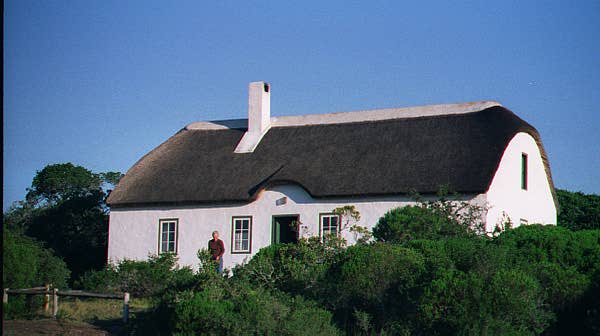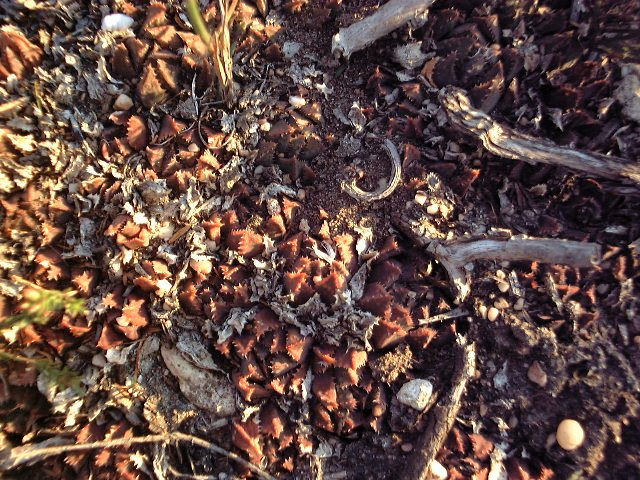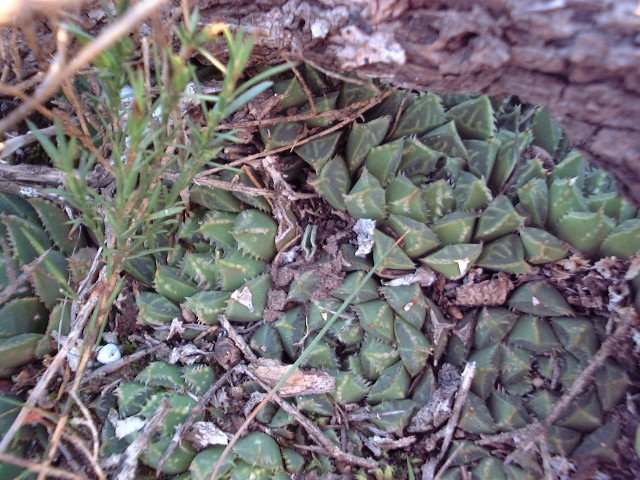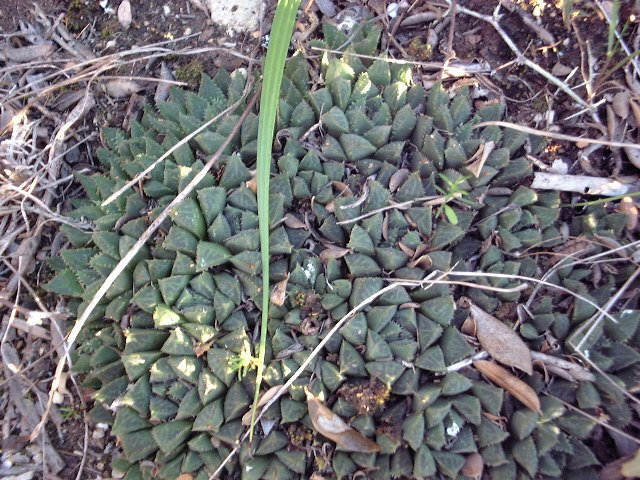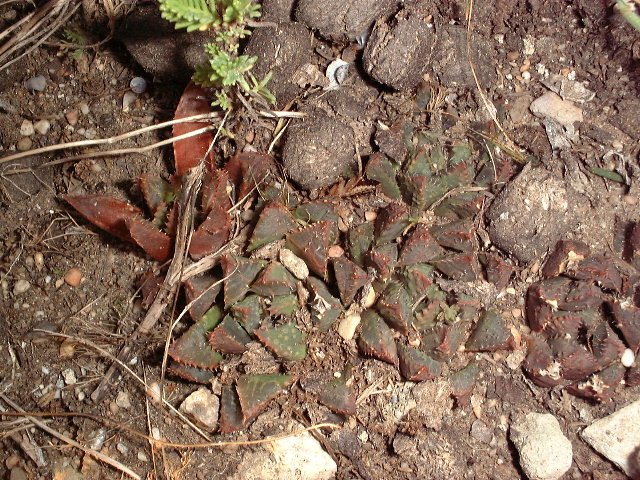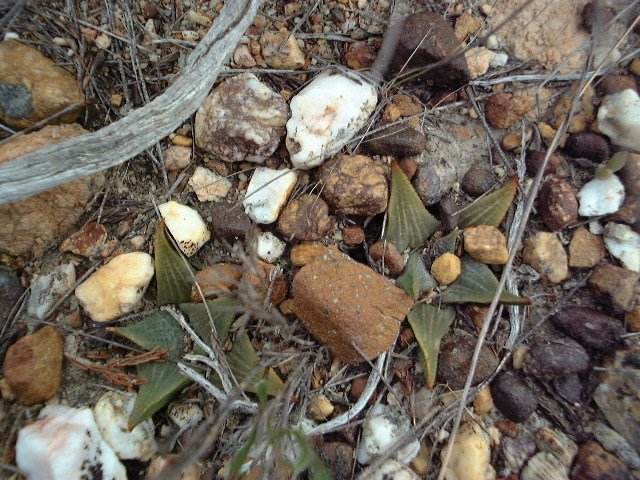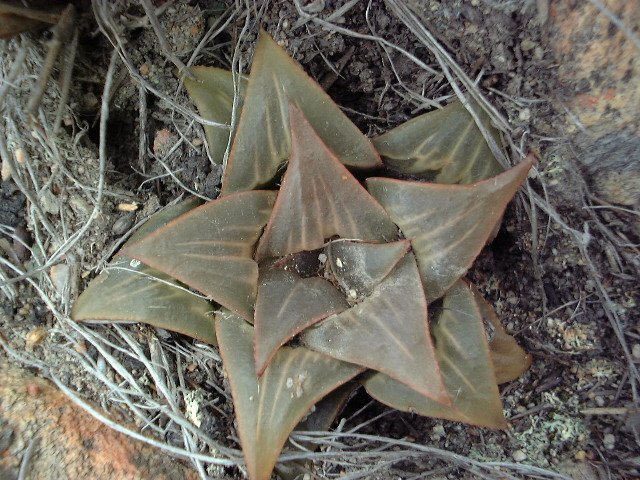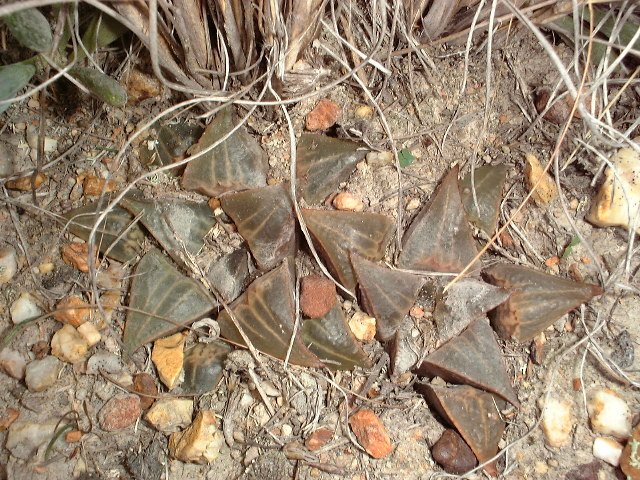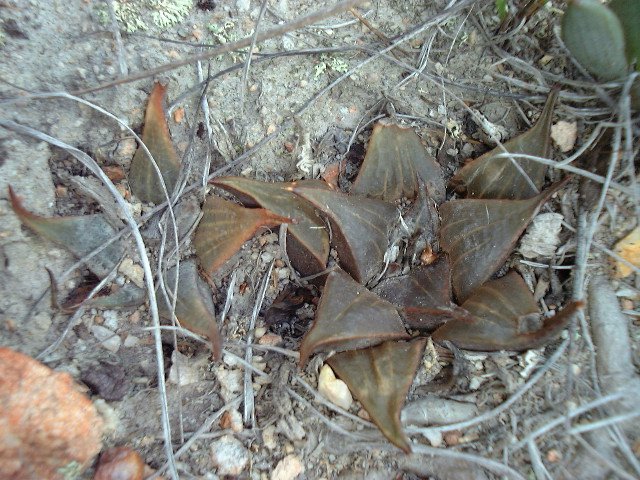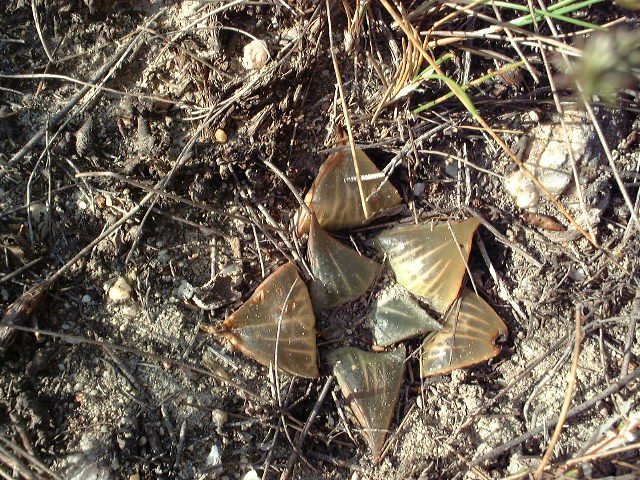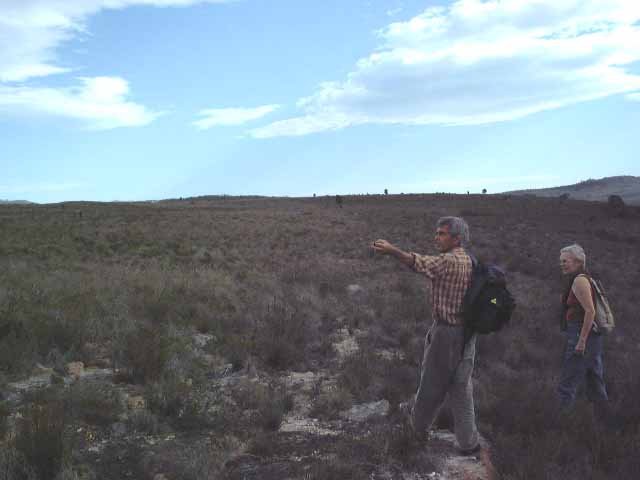It’s Sunday July 2 in Johannesburg, and I’m just off the plane from New York. I’ll spend Monday consulting at an international pharmaceutical company. One of the advantages of my work is that travel is a paid expense. After completing my work assignment I took a few days of personal time and flew to Cape Town on Tuesday. Bruce and Daphne Bayer were my hosts for the rest of the week. I have visited South Africa 3 times since 1995 and have taken every opportunity to be out in the veld looking for and looking at these wonderful plants. Earlier this year Bruce had challenged me to make a contribution, to stop being a sight seeing tourist, and instead apply myself more seriously. I have accepted the challenge. I want to understand the plain and simple cymbiformis. Bruce’s advice was to make a careful study of cymbiformis on the basis of what is known in collections and literature, and then make a useful study of cymbiformis on the basis of what is not yet known.
So off we went to Compton Herbarium at Kirstenbosch National Botanical Garden. Bruce introduced me to Susette Foster, Jo Beyers, Pascale Chesselet, and Koos Roux. Until then I had never seen or handled herbarium sheets and didn’t know the access protocol. The curators and botanists all knew Bruce, but were very protective and cautious, and rightfully so. Unscrupulous people would use the herbarium records to go commercial field collecting. Without academic or professional credentials I would not have been allowed access to the herbarium records. I returned to Compton on Wednesday and spent from 9am till 2:30pm just reviewing the cymbiformis sheets, I didn’t even look at one other species. It would have taken me all week to review the whole genus. Not that there are that many sheets, perhaps 50 sheets for Cymbiformis and maybe 1000 for the whole genus, but each sheet has a story, each sheet a work of art. It was fascinating seeing sheets pressed by G. G. Smith back in the 40’s. Many with hand drawings of leaf cross sections or flowers. The list of collectors, again just in the cymbiformis include; Miss G. I. Blackbeard, Miss M. Courtenay-Latimer, F.A. Fouche, W. Leighton, G.G. Smith, J. Dekenah, Miss G. Britten, Mrs. Helm, F.R. Long, W.E Armstrong, and on.
Anyway, there are big holes in the collection record, vast geographical areas where cymbiformis should be found. The interactions between cymbiformis, cooperi, gracilis, decipiens, aristata, bolusii var. blackbeardiana, and other species has plenty to be explained and explored. One example of something requiring an explanation Bruce has a collection of Cymbiformis from Swartwaterspoort. There are 5 plants, all of them very different. Many Cymbiformis populations are fairly uniform within the population. Here in the poort we have a very active zone. I’d like to find out what is happening here; hybridization, environmental adaptation, overlapping populations. I want to find this population and then circle around it to find out the other actors. I suspect Cooperi, Gracilis, Bolusii var. blackbeardiana.
The day started very early on Thursday. We had to get up early and get to their son Warwick’s farm in Kuilsriver, some 20+ minutes from Cape Town center by 7:00. So I woke and started getting ready when I heard Bruce get up. Then I checked my watch and saw that it was 4:30! – so I went back to sleep and got back up again at 6:15. The purpose of the trip to son Warwick’s was to pick up a load of garden plants for deliver to a garden center in Robertson. We got to Robertson around 9:30, having cautiously inched our way through great heavy fog banks found on the eastern side of the Huguenot Tunnel on the N1 motorway. This being the Breede River Valley I guess the fogs are a common winter occurrence.
Then off to the south to explore. We found a Haworthia serrata like thing at a farm north of Bredasdorp. We drove up to a farm, found the farmer and introduced ourselves. What wonderful people. The man hopped into his truck and lead us across his farm to the rocky ridge where we hoped to find some plants. And we did find them in the thousands. Serrate being a fairly rare species in cultivation I was surprised at the vast numbers we found. I think the reason it’s not as common in collections as other plants is because the area we were in, called the Overberg is heavily farmed; wheat and sheep mostly, and all but the rock ridges have been plowed. So there are these little natural habitat “islands” that aren’t easy to get to, being in the middle of farms, in a vast farming district. I can only imagine the forms and varieties now long gone having been plowed under. On a similar mission in early 1999 I got myself incredibly lost on the dirt farm roads south of Riversdale. I was pleased this time to be tagging along as Bruce, following no map, went exactly where he planned to go and found something new.
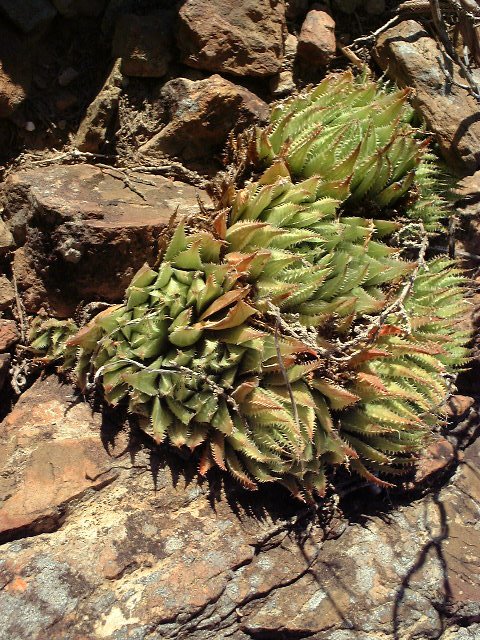
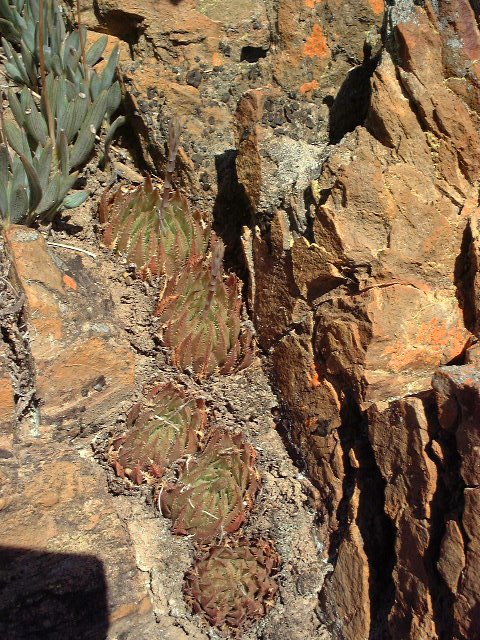
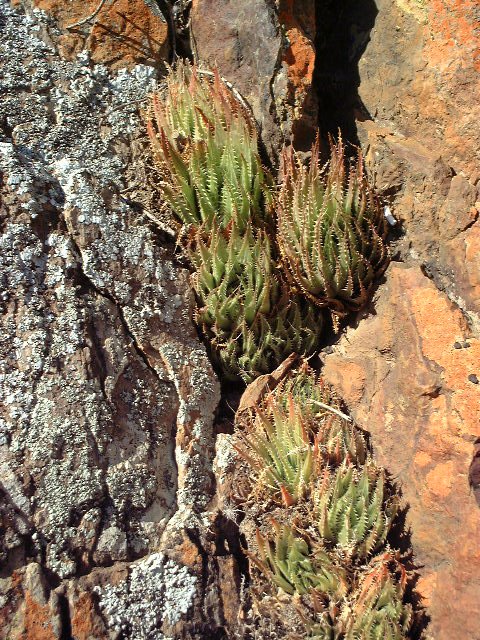
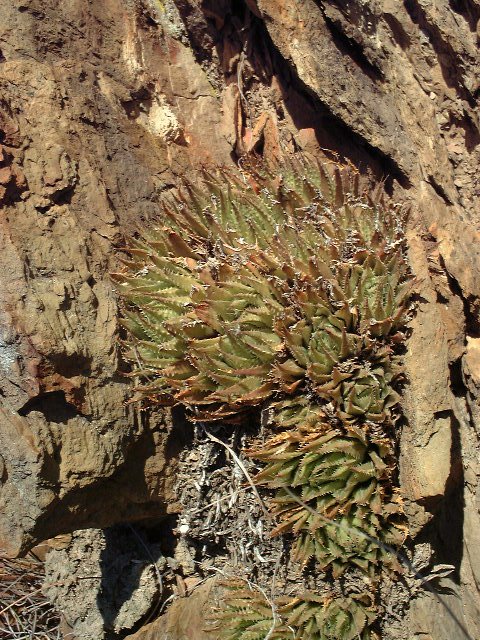
Then we went to another spot looking for other species but didn’t find much but a few clumps of a mirabilis / serrata thing. The first farmer told us about another farm a few miles away. There we found a young man, perhaps mid twenties running this huge sheep farm. He stopped what he was doing and rode with us in the truck, he and I in the back. He gave Bruce directions and then he and I started chatting. He was amazed than an American would come all this way and be interested in kicking around on his hill side. He came for the walk with us and was happy to see the plants we were looking for. This, his first time ever noticing these plants. Moments later his two younger brothers drove up on a motor bike – our visit being the most exciting thing to happen in weeks! It was school holiday for the next week or two, so the boys were out of school and we were their educational entertainment. We drove on and with a bit of a struggle found a few plants of Haworthia mutica just off the road in a big patch of Aloe Trees. The plants were beautiful, but we could find only one small group of maybe 20 plants. Quite surprisingly, to me were the bunches and bunches of baby plants. Bruce dug up a few and transplanted them in other hopeful places. Maybe they’ll spread.
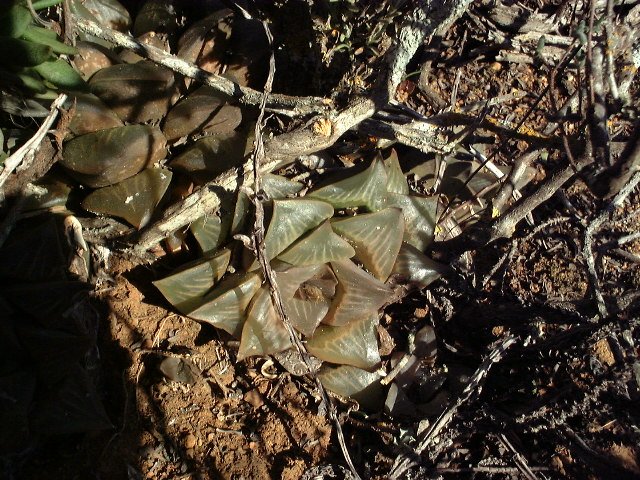
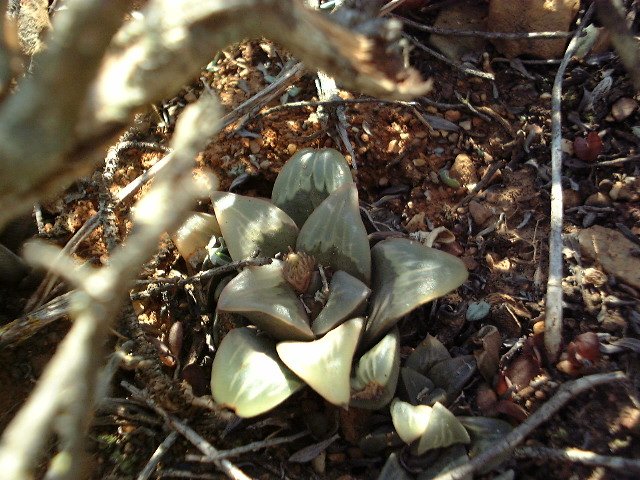
Thursday night we spent in a thatched roofed cottage on De Hoop Nature Reserve. This cottage is built in the classic Cape Dutch style with white washed walls, big tall ceilings. We had a fireplace, but didn’t really need it. The cottage came with full kitchen, pots and plates and all. Towels and a nice hot shower. Two bedrooms with extra blankets and pillows. The main room a combination kitchen, dinning and living room. All for an incredibly reasonable price of close to $35 for the night. De Hoop is southeast of Bredasdorp and right on the ocean. Bruce and Daphne are not ocean people. I was instantly drawn to the huge sand dunes and the smell of the sea but didn’t get to explore either. Next time I come to De Hoop I’m going to walk that beach! As a small consolation right out the front door of the cottage is an estuary with all sorts of ducks, waders and other water birds.
We had arrived there around 4pm and after tea went out for a hike returning at 6pm, just at sunset. We went looking for and found Haworthia mirabilis var. calcarea growing in calcrete, a white limestone cement like rock. We didn’t find the plants until we nearly given up and started back for the cottage. Earlier on the walk I had gotten very close to a small group of 8 Cape Mountain Zebra and I also saw several different kinds of bok. I think they were Bontebok and Springbok. The Bontebok is bigger than our North American White Tailed Deer and is mostly black with white markings; face, rump, socks and has long straight horns. The Springbok is smaller and is brown with white and dark brown markings. Really neat to see the animals without cages or fences.
On Friday, after a good nights sleep we drove east looking for more plants. We stopped at one farm near Napier and spoke with the farmer. He was happy to have us look on his hill, but not too interested in what we were doing. The hike was the longest of the two days, not too bad, say 3 or 4 km and only a bit of climbing. It took us forever to find the plants, but when we did we found tons of them. These plants being intermediate Haworthia serrata and mirabilis var. calcarea. The sun light was good and I got some good pictures – I hope.
Then after lunch we went looking at another site, but Bruce was disoriented, things looked different, he wasn’t sure where he was. We went to one hill but found nothing. Then down a dirt road we found a farm house and stopped in. The farmer was very interested, made us a sketch on how to get around his property to the ridge of hills that Bruce had been eyeing from the main road. And off we went. We found Haworthia badia in a new location. I first saw badia in 1995 when Kobus Venter took me to the type location. He made me swear secrecy – I wasn’t to tell anyone that I had even seen the plants in the wild, let alone what town. The 1995 site is in danger from human activity. Also the population is small and all the plants there could be easily collected in an hour or so. Bruce has since found 2 other locations. The one we found today had hundreds and hundreds of plants spread over a long distance. Haworthia badia is no longer in immediate danger of becoming extinct! The plants come in various colors from green to leaf tips tinted orange/red, to all orange/red, to dark milk chocolate almost cordovan colored. Beautiful plants. We then returned to the farm house to say thank you. The farmer and his wife invited us inside for coffee and cake. What a wonderful house, nice and cool inside, very formal, oil paintings on the walls, big grandfather clock, cut glass. The chocolate cake was great. The coffee nice and strong. The Bayer’s and the farmers yakked and yakked about plants and farming and herbs and medicine, and politics. We were there for an hour. A wonderful time. I’m welcomed back anytime!
Then a 2.5 hour drive back to Cape Town and pizza for dinner. I slept a little later than usual on Saturday, until 7am. Later in the morning I went to visit a wonderful plant grower. His name is Etwin Aslander. He is a few years younger than I, married to a wonderful woman and has a beautiful little girl about 3 years old. Etwin grows many different kinds of plants and he grows a lot of Haworthia very well. He works very hard, mostly by himself and is steadily building his business. He ships his plants all over the world and sells plants most of his plants on the web. Perhaps his business is getting bigger than he can handle. People complain that he takes too long to ship but may overlook the health and size of the plants he grows. I took a few pictures and looked at what he had and made some notes. We had tea and talked about people we know and about computers and about working together on a little project. Then in the afternoon I went to Durbanville to meet a friend of Kobus Venter by the name of Emile Heunis. Emil is my age. He has two boys, one 6 the other 10. Emile is a different kind of grower. He runs a Grey Heron Nursery, a cactus and succulent garden center which is less of a commercial enterprise as it is a living art gallery! Unfortunately he doesn’t sell plants by mail order but maybe he will someday soon. He also doesn’t have email, but he does have a computer. Someday soon he will get a new computer and then he will put his plant catalog on the web. He grows his plants very very very well. He has been influenced by his Japanese customers. He will grow trays of seedlings, pick out the 3 best and throw the rest away. I was shocked at how beautiful some of his plants were; beautiful, museum quality, works of art. Emile also likes to talk, and since I like to listen we hit things off. It was getting dark before I knew it. As I was leaving to go back to Cape Town he invited me to stay for supper. So there is this man who just met me for the first time inviting me into his home to sit down with his family. Nothing fancy but very tasty. I was very happy to make a new friend. Before I knew it darkness had come and it was getting late, back to the Bayer’s, then “call it a day” early and off to bed around 9. Sunday came, and off I went into Cape Town to sit at the Victoria & Alfred Waterfront and contemplate the sea. Then to Kleinbegin Farm to photograph more of Bruce’s collection and another nice dinner with his family.
As quickly as it started my short stay in the Western Cape was over and back I went to Johannesburg and back to work, spending the next week in Midrand and the following week in Bangkok Thailand. My last day in South Africa was spent with Madeleine Lehmann. Maddy and I first exchanged email a year earlier when I had offered Haworthia seed on one of the newsgroups. We spent a good part of the day at Witwatersrand Botanical Garden and hiked the paths up to Roodekrans.
Three weeks away from my girls (and my plants) was almost too much. And would have been had it not been for all of the wonderful people that touched me and the fantastic Haworthia that haunt my dreams. My work assignments in South Africa should continue, a week a month for the rest of the year.

